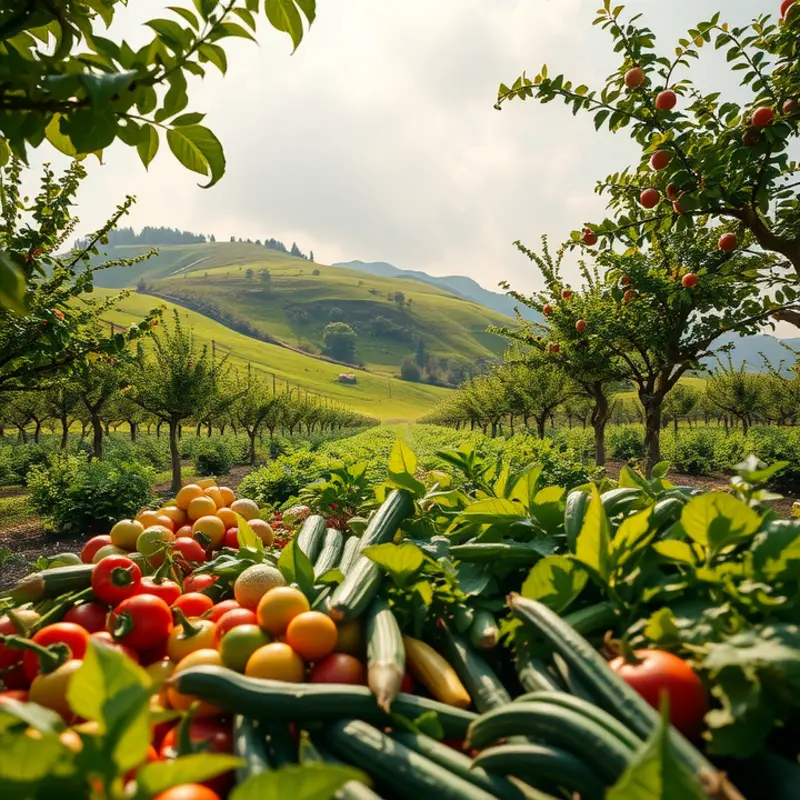Understanding safe temperature ranges for food storage is essential for maintaining freshness and preventing waste. By following simple guidelines, you can effectively manage your fridge and pantry, ensuring your food stays safe to eat for longer. This will not only help you save money but also support a healthier lifestyle. Let’s explore the ideal temperature ranges for food storage and practical strategies you can implement in your home.
Understanding Temperature Zones in Your Refrigerator

The refrigerator is one of the most vital tools in every kitchen, ensuring food stays fresh and safe for consumption. It is crucial to understand the different temperature zones within your refrigerator and how they impact food storage. Knowing how to use these zones helps you maximize freshness and minimize food waste.
The Ideal Refrigerator Temperature
For optimal food storage, set your refrigerator to maintain a temperature between 35°F and 38°F (1.7°C to 3.3°C). This range keeps food below the danger zone, which is above 40°F (4.4°C), where bacteria can thrive.
Temperature Zones Explained
Refrigerators have different regions with varying temperatures. Understanding these zones ensures you store different food types correctly.
-
Top Shelves: These tend to be the warmest part of the refrigerator. Store foods that are less temperature-sensitive here. Ideal items include pre-cooked foods or leftovers, where consistent refrigeration is less critical.
-
Middle Shelves: These are more uniform in temperature. Store eggs, milk, and dairy products here, as they require stable temperatures to prevent spoilage.
-
Bottom Shelves: Coldest areas are found at the bottom. This zone is best for storing raw meats, poultry, and fish. Ensure these items are well-sealed to prevent any cross-contamination with other foods.
-
Crisper Drawers: Designed to store fruits and vegetables, crisper drawers maintain higher humidity levels to keep produce fresh longer. Separate drawers for fruits and vegetables are ideal, as they require different humidity levels.
-
Refrigerator Door: The door is the warmest zone due to frequent opening and closing. Store condiments, juices, and other foods that are less prone to spoilage here.
Tips for Effective Refrigeration
-
Avoid Overfilling: Ensure air circulates freely around items. Overstuffing your fridge can block cooling vents, leading to inconsistent temperatures.
-
Check Gasket Seals: The rubber gaskets on refrigerator doors ensure a tight seal. Over time, they may wear out. Replace them if they appear cracked or if cold air escapes.
-
Monitor Expiry Dates: Keep a regular check on perishable items. Inspect foods regularly, allowing you to utilize items before they spoil.
-
Organize Smartly: Store items to allow visibility of expiry dates. This organization can also help reduce waste as you’re more likely to notice soon-to-expire items.
-
Consider Batch Cooking: Incorporate meal prep strategies, as discussed in Practical Ingredient Batching, to keep your meals fresh and reduce waste.
By understanding and utilizing the different temperature zones in your refrigerator, you can significantly enhance food safety and extend the shelf life of your groceries. This approach not only helps save money but also contributes to a more sustainable lifestyle.
Safe Storage Guidelines for Pantry Items

Storing pantry items correctly ensures they remain safe to eat and retain their freshness longer. To achieve this, understanding appropriate temperature and humidity levels is vital. Most dry goods such as grains, flour, and pasta are best kept in a cool, dry place, ideally between 50°F and 70°F. Elevating temperatures can speed up deterioration, while too much humidity can lead to mold growth.
Humidity levels in your pantry should not exceed 60%. High humidity can cause dry goods to absorb moisture, leading to spoilage. To maintain a suitable environment, consider using a dehumidifier if your pantry area tends to be damp.
Shelf Life of Common Pantry Items
- Grains and pasta: These typically last 6 months to 1 year. Store them in airtight containers to prolong freshness.
- Canned vegetables: When stored properly, they can last 1 to 5 years. Check the cans regularly for any rust or dents, and consume them before the expiry date.
- Spices: Most ground spices retain their potency for 1 to 2 years, while whole spices can last 3 to 4 years. To maximize their flavors, store them in a cool, dark place away from heat and light.
Organizing your pantry effectively helps you keep track of what you have, reducing the likelihood of food waste. Implement a ‘first in, first out’ system, placing new items at the back and older items at the front. By doing this, it ensures items are used in order of their expiration dates.
Labeling is a simple yet effective strategy. Clearly marked containers can save you time and prevent ingredient confusion. Regularly check expiry dates to ensure no outdated products linger in the pantry.
Regular pantry audits are wise. Every few months, take some time to declutter and clean your shelves. Identify any items that are nearing expiration and prioritize their use or consider incorporating them into meal planning. Incorporating efficient meal prep strategies can further assist in utilizing pantry goods promptly, as outlined in our practical ingredient batching guide.
By following these storage guidelines, you can significantly reduce waste and extend the life of your pantry items, making the most of your food supplies while ensuring safety and fresh quality.
Final words
Maintaining safe temperature ranges for food storage is vital for reducing waste and ensuring food safety at home. By implementing the guidelines for both your refrigerator and pantry, you can extend the shelf life of your groceries while enjoying their optimal freshness. Regularly check the temperature settings of your appliances, monitor the conditions in your storage areas, and practice good organization to keep your food management efficient. Small changes can lead to significant benefits not just for your wallet, but for your health and the planet as well.







